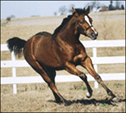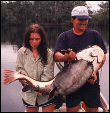|
|
|||||||||||||||||||||||||||||||||||||||||||
|
|
|||||||||||||||||||||||||||||||||||||||||||
|
Here are some tunes available for everyone's use and enjoyment!
You will need Acrobat Reader to view them. Click here for a free downloadable version if you don't have it already. |
|||||||||||||||||||||||||||||||||||||||||||
|
Original Compositions by Neal Hellman
A Song For Lori: You'll probably notice in many of my arrangements in the 1-5-1 tuning, I like the lead note of the back-up chord to be played on the bass string. For example, in this piece I use a 5-6-7 (7 being the bass) for the opening G chord. In the 1-5-1 tuning, any chord can be inverted. Therefore a 5-6-7 chord could be played 7-6-5 (5 being the bass). The 5-5-7 Bm chord can be played 7-5-5 — and so on. It all depends on the voicing you wish to achieve. Experiment and find out what sounds best on your instrument. |
|||||||||||||||||||||||||||||||||||||||||||
|
American Landscape:
I composed this piece with the Amish country of Eastern Pennsylvania in mind: the beautiful farms, the rolling hills and the simple way of life. I use my thumb a lot, so I start the tune with my middle finger over the second fret and my thumb over the fourth. A rip (R) is done by dragging one's (fretting) finger across all the strings, bass to treble. |
|||||||||||||||||||||||||||||||||||||||||||
 |
|||||||||||||||||||||||||||||||||||||||||||
|
Appaloosa:
Co-written with Joe Weed. Arranged for the happy flatpicker. Play this one in slow motion at first. Try to master a small phrase at a time. I must admit I still have trouble with this one but it’s worth the work. |
|||||||||||||||||||||||||||||||||||||||||||
 |
|||||||||||||||||||||||||||||||||||||||||||
|
Bagatelle:
I wrote this Bagatelle as a fun piece and promptly used it as the theme for the children’s video fairy tale Princess Furball. As in many of the compositions, I employ a flatpick to articulate the notes. I also like to use my thumb, especially pulling from 5-3-3 to 3 (see bar #3). |
|||||||||||||||||||||||||||||||||||||||||||
|
Canterbury Air:
This is my soundtrack for an imaginary film of Chaucer's pilgrims as they journey to the cathedral. Tuned D-A-D, you'll be playing in B minor. Durango: |
|||||||||||||||||||||||||||||||||||||||||||
|
La Mort de Coucy:
I wrote this lament for Enguerrand de Coucy VII, hero of the book A Distant Mirror by Barbara Tuchman, which chronicles the calamitous 14th century — an era of endless warfare, political and religious scandals and diseases that could not be cured — imagine living in such a time. Coucy inherited one of the most awesome fortresses in Europe, near what is now Soissons in France. Arranged for fingerpicking, please play this one slowly. |
|||||||||||||||||||||||||||||||||||||||||||
 |
|||||||||||||||||||||||||||||||||||||||||||
|
Lauda di Molino:
An ode to Molino Creek Tomatoes. The Molino tomato made a believer out of me. Being from New York City, tomatoes were always an object to be avoided. Hard and tasteless. Except perhaps on a BLT. My first bite of the dry-farmed Molino Creek tomato made me realize all the pleasure that lies within the tomato experience. Here's the poem that accompanies the first part of the song: "Praise the tomato, Lauda di Molino. Grown in California with a lot of love. Bellisima Pomodore." |
|||||||||||||||||||||||||||||||||||||||||||
 |
|||||||||||||||||||||||||||||||||||||||||||
|
Little St. Anne:
Joe Weed and I wrote this advanced piece for a handicapped girl I used to take care of during my year as an aide in special education. Try learning this one part at a time. |
|||||||||||||||||||||||||||||||||||||||||||
|
Ninety-Pound Catfish:
I wrote this rip-roaring dulcimer tune while on tour in Tennessee, and it’s based on a true story. I tried to sell it to television for a mini-series but they just refused to pay me scale. Note the modulation to the key of G. |
|||||||||||||||||||||||||||||||||||||||||||
 |
|||||||||||||||||||||||||||||||||||||||||||
|
Picnic on the St. Croix:
This is another tune I wrote for four equidistant strings tuned D-D-G-D. As in Durango, the chords are written out to show you finger position for each bar. Robertson’s Unreel: |
|||||||||||||||||||||||||||||||||||||||||||
|
Click here to view giant catfish caught in Thailand!
|
|||||||||||||||||||||||||||||||||||||||||||
|
Traditional Tunes From Europe
|
|||||||||||||||||||||||||||||||||||||||||||
|
Andante from the Quartet in A Major (Wolfgang Amadeus Mozart, 1756-1791):
Why am I arranging this piece in A major in D? As mentioned above, D-A-D is the tuning of choice these days. To play this in A one would have to tune A-E-A which would mean tuning your strings so high they would break or so low they would sound terrible. I've recently purchased a very small “box” dulcimer and put very thin strings on it (.008 - .011 - .018W) so I could play in this key. I like to use a flatpick and articulate near the bridge to get the most “bite”. Arran Boat Song: |
|||||||||||||||||||||||||||||||||||||||||||
 |
|||||||||||||||||||||||||||||||||||||||||||
|
Bianco Fiori:
Notice in bar #3, I play the full chords. Perhaps you should try a variation: just play the melody string for a different tone on your second time through this Renaissance dance tune. |
|||||||||||||||||||||||||||||||||||||||||||
 |
|||||||||||||||||||||||||||||||||||||||||||
|
Blind Mary:
O’Carolan composed this sad and pretty air for his friend Mary Dhall. The 6+-4-3 chord adds a bit more poignancy to the piece. |
|||||||||||||||||||||||||||||||||||||||||||
 |
Canarios:
This piece by Gaspar Sanz (1640-1710) is probably one of the most difficult pieces I have arranged. I like to play it on my small dulcimer in the key of G. There are many versions of this composition. I learned this one from the talented guitarist William Coulter. This is the version I perform on the recording "Masters of the Mountain Dulcimer". |
||||||||||||||||||||||||||||||||||||||||||
|
Douce Dame Jolie :
Medieval master Guillaume de Machaut composed this haunting melody in the Dorian mode for his young mistress. |
|||||||||||||||||||||||||||||||||||||||||||
 |
|||||||||||||||||||||||||||||||||||||||||||
|
El Tutu:
Tune D-G-D, a sort of “new” Ionian Mode of G, whose advantage is that one can play the same melody on the bass string as on the treble string. Each of the three parts has a different rhythm. Learned from the playing of the group Calliope from the album Calliope Festival, Nonesuch Records #79069. Lauda: Lauda Di Maria Maddalenna: |
|||||||||||||||||||||||||||||||||||||||||||
 |
|||||||||||||||||||||||||||||||||||||||||||
|
Rondeau (Jean Mouret 1682-1738):
Mouret, court composer for Louis XIV, achieved immortality with this work when it was adopted as the theme for television’s Masterpiece Theatre. This version contains all four parts. Spagnoletta: |
|||||||||||||||||||||||||||||||||||||||||||
| Breton Tune: I learned this ancient tune from Brittany from the recording Portals of Grace by Azam Ali. It works well as a round. A wonderful example of just how hynotic a simple tune can be. |
|||||||||||||||||||||||||||||||||||||||||||
 |
|||||||||||||||||||||||||||||||||||||||||||
|
|
|||||||||||||||||||||||||||||||||||||||||||
|
For more dulcimer books, visit our Bookshelf.
For dulcimer albums, vist our Mountain Dulcimer page or our Hammered Dulcimer page. |
|||||||||||||||||||||||||||||||||||||||||||
|
|
|||||||||||||||||||||||||||||||||||||||||||
 |
|||||||||||||||||||||||||||||||||||||||||||